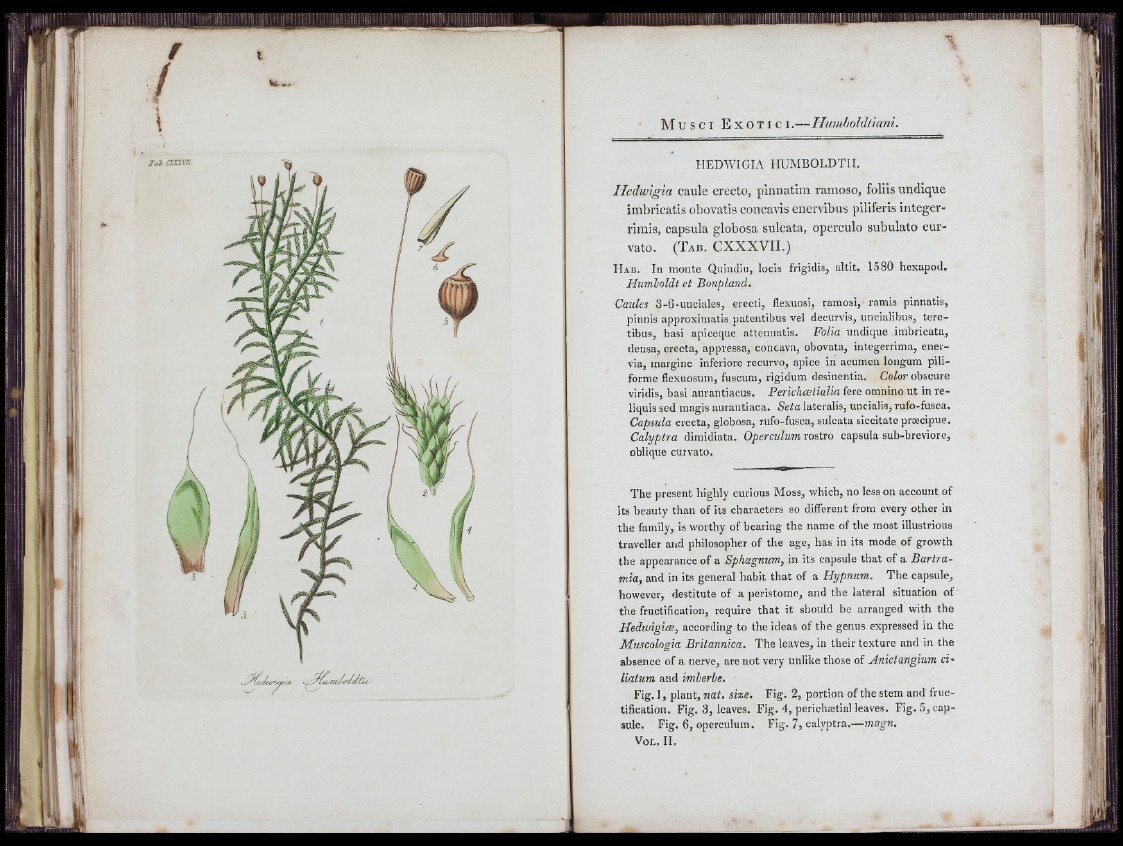
i
!;
l í
f Y
■ i ! l
/
TaíOimi. HEDWIGIA HUMBOLDTH.
Hedwigia caule erecto, pinnatim ramoso, foliis undique
imbricatis obovatis concavis enervibus piliferis integerrimis,
capsula globosa sulcata, operculo subulato curvato.
(Tab. CXXXVII.)
H a b . In monte Quindiu, locis frigidis, altit. 1580 hexapod.
Humloldt et Bonpland.
Caules 3-6-unciales, erecti, flexuosi, ramosi, ramis pinnatis,
pinnis approximatis patentibus vel decurvis, uncialibus, tere-
tibus, basi apiceque attenuatis. Folia undique imbricata,
densa, erecta, appressa, concava, obovata, integerrima, enervia,
margine inferiore recurvo, apice in acumen longum pili-
forme flexuosum, fuscum, rigidum desinentia. Color obscure
viridis, basi aurantiacus. Perichætialia fere omnino ut in reliquis
sed magis aurantiaca. Seta lateralis, uncialis, rufo-fusca.
Capsula erecta, globosa, rufo-fusca, sulcata siccitate præcipue.
Calyptra dimidiata. Operculum rostro capsula sub-breviore,
oblique curvato.
The present highly curious Moss, which, no less on account of
its beauty than of its characters so different from every other in
the family, is worthy of bearing the name of the most illustrious
traveller and philosopher of the age, has in its mode of growth
the appearance of a Sphagnum, in its capsule that of a Bartramia,
and in its general habit that of a Hypnum. The capsule,
however, destitute of a peristome, and the lateral situation of
the fructification, require that it should be arranged with the
Hedwigiæ, according to the ideas of the genus expressed in the
Muscologia Britannica. The leaves, in their texture and in the
absence of a nerve, are not very unlike those of Anictangium ci-
lialum and imlerle.
Fig. 1, plant, nat. size. Fig. 2, portion of the stem and fructification.
Fig. 3, leaves. Fig. 4, perichætial leaves. Fig. 5, capsule.
Fig. 6, operculum. Fig. 7, calyptra.'—magn.
Vol. II.
illN
■■.Af ,11'